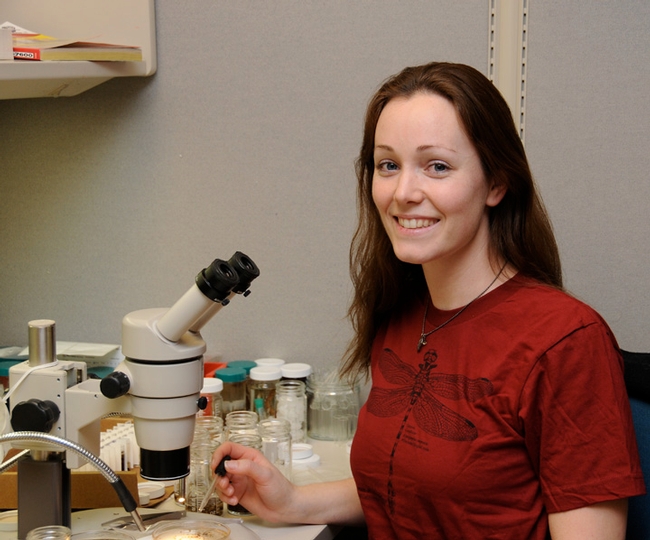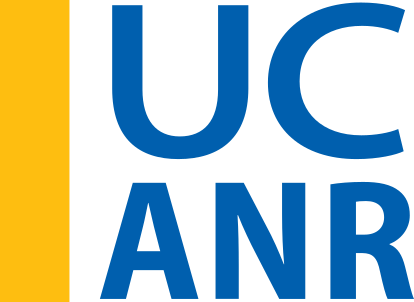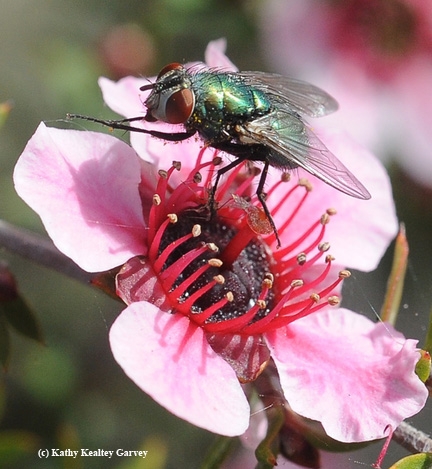- Author: Kathy Keatley Garvey
That rhymes.
And that's what's planned as the family craft activity when the Bohart Museum of Entomology hosts an open house on fly research from 1 to 4 p.m., Saturday, Jan. 12 in Room 1124 of the Academic Surge Building, located on Crocker Lane, UC Davis campus. It's free and family friendly.
Bohart associate and entomology undergraduate student Wade Spencer has ordered the maggots. The tables are set up and ready.
All you do is pick up a maggot, dip it into a non-toxic, water-based paint, and let it crawl--or guide it--on a piece of paper. Voila! Art. Maggot art. And perfect for framing or posting on your refrigerator or bulletin board.
It's a conservation piece.
"Umm, what's that on your refrigerator?"
"Maggot art."
"Wh-a-a-t?"
And so the story begins.
If you've ever been to the annual UC Davis Picnic Day (this year's it's April 13) and wandered over to Briggs Hall, home of the UC Davis Department of Entomology and Nematology, you'll see Maggot Art in action. t's known as one of the most popular Picnic Day activities.
Several years ago we asked forensic entomologist Robert Kimsey of the UC Davis Department of Entomology and Nematology faculty (and a past president of the North American Forensic Entomology Association) for his take on Maggot Art.
One of his former graduate students, Rebecca O'Flaherty, coined the term and the activity back in 2001 when she was studying at the University of Hawaii. She was rearing blowflies for her forensic research and wanted an activity to draw the interest of elementary school students in her teaching program. She sought to generate interest and respect for an entomological wonder that's more associated with road kills and goose bumps than art thrills.
Her Maggot Art activity drew national interest. "The beauty of the Maggot Art program," she told me, "is its ability to give hands-on, non- experiences with an insect that most people fear or loathe."
So what was Professor Kimsey's take on it ?
"This is an extremely interesting and innovative idea that combines vry basic biology with art in a form that people can readily access and understand," he said. "It provides an entrée into the biology and development of insects that people can really appreciate and understand. It was a stroke of genius."
What the Bohart folks do is also a stroke of genius.

- Forensic entomologists Danielle Wishon, graduate of UC Davis, and doctoral student Alex Dedmon of the Robert Kimsey lab
- Fourth-year doctoral student Charlotte Herbert Alberts of the Lynn Kimsey lab, Bohart Museum, who studies assassin flies
- Graduate student Socrates Letana of the Lynn Kimsey lab, Bohart Museum, who studies botflies
- Doctoral student Caroline Wright Larsen of the James R. Carey lab, who studies non-native non-native tephritid flies, including Mediterranean fruit flies
- Graduate students Christine Tabuloc and Yao Cai and undergraduate students Cindy Truong and Christopher Ochoa, all of the Joanna Chiu lab, who research fruit flies
- Nermeen Raffat, a visiting scholar in the Sharon Lawler lab, who studies "the effect of copper sulphate and other toxicants on the development and anti-predatory behavior of the mosquitoes larvae."
Undergraduate student Kathlyne-Inez Soukhaseum of the Frank Zalom lab, who researches the fruit fly, the spotted-wing drosophila, Drosophila suzukii, was initially scheduled to participate.
Dedmon is the newest addition to the list of those who will be participating at the Bohart open house. Working with major professor Robert Kimsey, he studies forensic entomology--the use of insects as evidence in the court of law. "My work is in insect succession, or the composition and patterns of insects that come to and from a decedent," he related. "I am interested in defining these patterns, as well as the various factors that influence them. Specifically, I seek to make insect succession a more reliable tool in evaluating the postmortem interval of a decedent, that is, the time elapsed since death. Ultimately, the goal of my research is to provide a stronger foundation of evidence for forensic entomologists testifying in court."
Besides checking out the flies--and creating maggot art--this is also a good time for visitors to inquire about graduate school, ask about starting research projects, and to meet people working in forensics, evolution, agriculture, animal behavior, genetics, geography, and home pests, among other topics," said Tabatha Yang, education and outreach coordinator.
Entomologist Jeff Smith, who curates the Bohart's butterfly and moth section, will be on hand to open the Diptera section and answer questions.
"We've never had a fly specialist here at UC Davis except for mosquitoes," said Lynn Kimsey, director of the Bohart Museum and professor of entomology. "We have one of the world's largest mosquito collections. Overall, I'd guess we have 300,000 fly specimens."
The Bohart Museum houses nearly eight million insect specimens, a live "petting zoo" (think Madagascar hissing cockroaches, stick insects, tarantulas and praying mantids) and a year-around gift shop. The museum is open to the general public Mondays through Thursdays, from 9 a.m. to noon and from 1 to 5 p.m., plus occasional, weekend open houses. Admission is free. Further information is available on the Bohart Museum website at http://bohart.ucdavis.edu/ or contact (530) 753-0493 or bmuseum@ucdavis.edu.

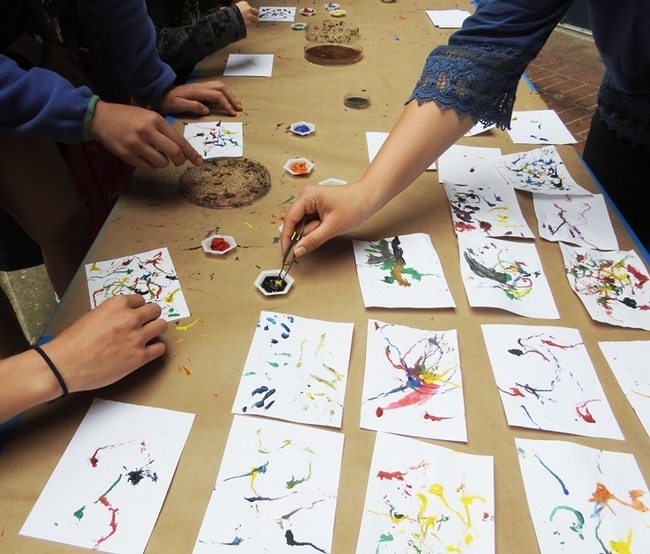
- Author: Kathy Keatley Garvey
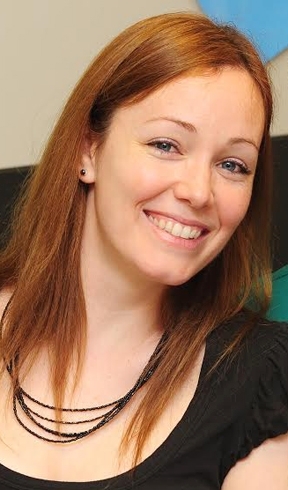
She's one of the 10 fly researchers who will greet the public and answer questions about insects in the Diptera order and talk about their research and career possibilities. The event, free and open to the public and family friendly, will be held from 1 to 4 p.m. in Room 1124 of the Academic Surge Building on Crocker Lane, UC Davis campus.
The theme is "Time's Fun When You're Studying Flies." That's a take-off of "Time flies when you're having fun."
Wishon, who holds a bachelor of science degree in entomology from UC Davis, worked at the California Department of Food and Agriculture from 2012 and 2016, and as a forensic investigator with the Sacramento Police Department from 2016 to 2017. She has also worked at the Bohart Museum and in the Phil Ward ant lab in the UC Davis Department of Entomology and Nematology.
She is now seeking her master's degree.
"I am in the process of applying to Dr. Trevor Stamper's laboratory in the Entomology Department at Purdue University," she related. "Dr. Stamper is the Forensics Science Program director and works, primarily, on the identification and biology of forensically significant dipteran. Currently, his lab is focused on testing the idea that potential evaporation, and the environmental parameter it comprises, regulate vertebrate decomposition rates across broad geographical space. If accepted, I will be studying humidity as a variable for oviposition behavior in the decomposition process. Additionally, I will use SEM (scanning electronic microscope) and molecular data to support insect identification and develop a practical pictorial key for forensically significant Diptera egg identification."
At her booth, "I will speak to this research as well as general forensic entomology and other research I have participated in, including Dr. Robert Kimsey's fire-death related entomology evidence for determining minimum PMI (post-mortem interval)." She also will display equipment.
Danielle is a past president of the UC Davis Entomology Club, and the recipient of the Department's 2011 Outstanding Undergraduate Student Award. At the plaque ceremony, Kimsey, a forensic entomologist and the club advisor, praised her as "the hardest working student I have ever seen. And, her overwhelming concern for humans of all kinds earns her the title of latter day Florence Nightingale."
Danielle has always loved insects and "anything creepy crawly. for that matter."
We remember featuring her in a 2011 blog. Tracing her love of insects to her early childhood, Danielle acknowledged that while other girls played with dolls, she spent many of her non-school hours collecting and playing with insects, snails and slugs, pill bugs, spiders and other invertebrates.
At age 4, she created a habitat for 30 garden snails in a shoebox. “I took the box up to my room and put it under my bed. Sometime later I came crying down the stairs because all of my snails had left me. Apparently I had not yet learned the concept of a lid. My mother then proceeded to help me collect my snail pets off my bed post, the walls, the nightstand…”
Although Danielle has always loved insects, she was unaware she could make a career out of it. She mentioned that in the third grade, “we had to write an autobiography and description of our desired future.” She wrote that she wanted to become an ice skater and have six children.
“It's amazing how times change,” Danielle commented. “Soon after I completed it, a family friend who knew my affinity for insects, read the autobiography and informed me that I could become an entomologist. It had never occurred to me that I could play with insects as a profession.”
Born on Coronado Island, Danielle moved to Las Vegas at age 11. “My insect collecting was limited while I lived in Las Vegas, but I kept several black widows, jumping spiders, and beetles. I also dipped into herpetology a bit and became the editor of the Southern Nevada Herpetological Society.”
Danielle attended colleges in Las Vegas and San Diego before settling in Rocklin and Davis.
While studying for her entomology degree at UC Davis, Danielle reared bed bugs for several years, sharing them with other scientists and at open houses at the Bohart Museum. She no longer keeps a colony of bed bugs but keeps or retains fond memories of UC Davis and the Department of Entomology and Nematology.
And now, her sights are set on a master's degree in entomology.
"Time's Fun When You're Studying Flies."
Danielle will be joining these fellow fly researchers at the open house:
- Fourth-year doctoral student Charlotte Herbert Alberts of the Lynn Kimsey lab, Bohart Museum, who studies assassin flies
- Graduate student Socrates Letana of the Lynn Kimsey lab, Bohart Museum, who studies botflies
- Doctoral student Caroline Wright Larsen of the James R. Carey lab, who studies non-native non-native tephritid flies, including Mediterranean fruit flies
- Graduate students Cindy Truong and Yao Cai and undergraduate students Cindy Truong and Christopher Ochoa, all of the Joanna Chiu lab, who research fruit flies
- Undergraduate student Kathlyne-Inez Soukhaseum of the Frank Zalom lab, who researches the fruit fly, the spotted-wing drosophila, Drosophila suzukii
- Nermeen Raffat, a visiting scholar in the Sharon Lawler lab, who studies "the effect of copper sulphate and other toxicants on the development and anti-predatory behavior of the mosquitoes larvae."
"Besides checking out the flies, this is also a good time for visitors to inquire about graduate school, ask about starting research projects, and to meet people working in forensics, evolution, agriculture, animal behavior, genetics, geography, and home pests, among other topics," said Tabatha Yang, education and outreach coordinator.
Entomologist Jeff Smith, who curates the Bohart's butterfly and moth section, will be on hand to open the Diptera section and answer questions. A family craft activity is also planned.
The Bohart Museum houses nearly eight million insect specimens, a live "petting zoo" (think Madagascar hissing cockroaches, stick insects and tarantulas) and a year-around gift shop. The museum is open to the general public Mondays through Thursdays, from 9 a.m. to noon and from 1 to 5 p.m., plus occasional, weekend open houses. Admission is free. Further information is available on the Bohart Museum website at http://bohart.ucdavis.edu/ or contact (530) 753-0493 or bmuseum@ucdavis.edu.
